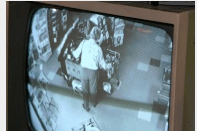According to the Civilrights.org website “The U.S. Supreme Court has held that racial profiling violates the constitutional requirement that all persons be accorded equal protection of the law.19 Recently, many lawsuits that have captured the attention of the public involves lawsuits where not only the accused shoplifters , but employees of these retail stores have cited racial profiling against these giants. Follow more news about this topic by following the links below.
Fashion Chain Zara Profiles Black Shoppers As Potential Thieves, Workers Allege In Report
In early June, Spanish fast fashion chain Zara hit headlines when the longtime in-house lawyer for their American stores sued for $40 million in damages, alleging anti-Semitic, anti-gay discrimination.
Zara called their former counsel’s allegations “shocking,” adding that the company intends to “respond strongly and vigorously” in court.
A report released on Monday suggests the clothier may have deeper troubles, starting with a corporate culture steeped in racism.
Labor advocacy group Center for Popular Democracy surveyed Zara retail employees at six of the chain’s seven New York City stores this past spring following a handful of scandals involving insensitive designs by the fashion company, like a child’s shirt that resembled a Holocaust uniform.
CVS was hit with a federal lawsuit on Wednesday after four former store detectives at the drug chain charged their supervisors told them to profile minorities for anti-shoplifting enforcement.
The store detectives, who are also minorities, argued in their lawsuit that they endured racially insulting language and had clear instructions from their bosses to keep an eye on blacks and Hispanics because they were the ones most likely to steal, according to Newsday.
The detectives charged that when they pushed back against the profiling orders they were all fired, they claimed in their suit.
“CVS intentionally targets and racially profiles its Black and Hispanic shoppers based on the highly offensive, discriminatory and ill-founded institutional belief that these minority customers are criminals and thieves,” lawyers for former store detectives stated in their suit.
Natick judge to Macy’s: Stop collecting shoplifting fines
A Natick District Court judge told a lawyer from Macy’s he planned to issue an injunction banning the store from collecting fines from shoplifting suspects, but said he expects Macy’s to ignore the court order.
Judge Douglas Stoddart said Macy’s policy to collect a $500 fine from alleged shoplifters is “ethically wrong.”
“We’re heading into uncharted waters, legally, and I think it needs to be heard by a higher court,” Stoddart told the store’s lawyer, Daniel Field.
In March, Stoddart held a hearing to discuss Macy’s policy. Currently, if suspected shoplifters are caught they are brought into a security office, and told they can pay a $500 fine instead of being sued civilly for the money. However, payment of the $500 does not preclude their arrest. Several people have told Stoddart over the years they were told if they paid the money they wouldn’t be arrested, but still were.


 oss the nation display signs warning the would be shoplifters of the intent to prosecute them if they shoplift. Shoplifting and employee theft cost retailers billions of dollars every year, but the problem persists, and in some communities shoplifting incidents have increased.
oss the nation display signs warning the would be shoplifters of the intent to prosecute them if they shoplift. Shoplifting and employee theft cost retailers billions of dollars every year, but the problem persists, and in some communities shoplifting incidents have increased.
